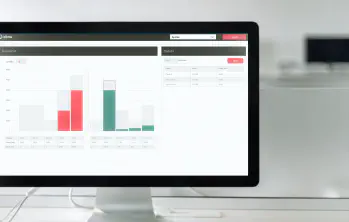The Future of compliance: Predictive analytics and proactive surveillance
Attempting to predict the future of regulatory requirements and technology is always dangerous. Investment markets are fast-moving and can change in the blink of an eye; we all remember the regulatory fallout from the 2008 global financial crisis - any prophecies made prior to that would have been quickly obsolete.
In a perfect world, predictive analytics and proactive trade surveillance would keep us one step ahead of bad actors and potential market malfeasance. However, it’s more complex than that; sometimes, a blend of reactive and proactive can help achieve the best results, setting solid foundations for the future.
Challenges in trade surveillance and market abuse monitoring
Before we look at how predictive and proactive (as well as reactive) strategies can help with trade surveillance and market abuse monitoring, it’s essential to identify some of the broader challenges. These include:
- Complex and evolving regulations
- Data volume, variety and management
- Technological integration
- Addressing the challenge of false positives
- Detection of insider trading
- Broader market manipulation
- Cross-market and cross-asset monitoring
- Allocation and focus of resources
- Real-time monitoring and latency
- Privacy and data protection
- Behavioural pattern recognition and integration
In systems with any degree of automation, false positives will emerge. Filtering out these false positives while flagging valid positives can be challenging. This is where machine learning and broader Artificial Intelligence (AI) technology are helping to improve results.
Understanding predictive analytics in trade surveillance
Analytics cannot be used to predict the future. However, by examining past instances of market abuse and analysing any trading or behavioural patterns that arise, we are able to harness retrospective insights to predict with a higher degree of certainty potential future instances of abusive or manipulative trading. This is the real benefit of predictive analytics.
This style of predictive analytics is already being harnessed by financial institutions to improve their risk mitigation strategies and root out instances of market abuse before they take place. There are many examples of this, such as:
Scenario: Financial institutions and trade surveillance systems may use machine learning algorithms to analyse historical trading data in addition to client-centric alert feedback loops to identify, and risk score, future instances of insider trading and market abuse.
Application: In practice machine learning, utilising client-centric risk scoring of historic alerts, could allow for both dynamic parameterisation for alert typologies in addition to risk scoring for future alerts.
Benefit: Potentially abusive or high-risk trading is flagged quickly and accurately, prompting immediate investigation, thereby reducing financial and reputational risk.
The benefits of dynamic parameterisation are that firms can have thresholds that meet both their risk appetite and the specifics of their trading activity; complemented by risk scoring of alerts that reflects their historic alert patterns and allows analysts to focus their time effectively.
The shift from reactive to predictive monitoring
Ongoing technological advances have brought a new era for trade surveillance systems, but are we moving from a reactive to a proactive strategy when it comes to monitoring market abuse?
Trade surveillance is, by definition, reactive rather than proactive: it is backward-looking, examining events (orders/amendments/cancellations/executions) that have already occurred.
Bearing this in mind, a question arises: what would a proactive approach to market abuse look like?
One of the most effective ways of introducing a proactive element to market abuse detection and prevention is to incorporate communication monitoring. By adding eComms surveillance to existing trade surveillance processes, firms are able to both actively analyse former trades and highlight potential future instances of market abuse. Catching criminals in the planning stage of insider trading or broader market abuse allows financial institutions and regulators to take control, preventing abusive trading before it takes place.
Scenario: A trading firm implements a system that monitors email, chat, voicemails, and other, non-structured data, channels between traders and external parties in real-time.
Application: Using Natural Language Processing (NLP), specific words and phrases that may relate to, for example, market abuse or, more specifically, insider dealing can be flagged. The system can also be adapted to focus on particular companies, industries, third parties, or even less well-known keywords and phrases via a targeted lexicon approach.
Benefit: In theory, if the suspicious lexicons are identified early in the process, action can be taken to avoid market abuse and flag bad actors. This would be deemed a proactive approach because the financial institutions and regulators have identified a situation and taken control before it has time to be actioned. In addition, where the market activity has already begun, this system can still prove useful in collating critical evidence to support potential investigations and prosecutions.
Integration of predictive analytics, proactive surveillance, and trade surveillance
At eflow, we appreciate the challenges institutions and regulators face in relation to trade surveillance and identifying instances or potential instances of market abuse. Predictive analytics and proactive surveillance have significant benefits, but when combined, the two enhance the broader benefits.
When it comes to identifying and flagging market abuse, we provide two specific services:
TZTS Trade Surveillance for Market Abuse
Powered by machine learning and behavioural analytics, TZTS automatically monitors your trades for over 40 forms of market abuse to satisfy the increasingly granular requirements of industry regulators. The TZTS module can test all major asset classes, can be tailored to your exact specification, and enables you to dynamically adjust test parameters on an ongoing basis. This enables firms to satisfy global regulatory requirements, automate previously time consuming compliance checks, all while reducing unnecessary ‘noise’ that distracts from your primary business goals.
TZEC eComms Surveillance
TZEC captures the full spectrum of electronic interactions taking place across your firm, including email providers, messaging apps and call recording services. It ingests and normalises data from various sources, employing advanced algorithms to detect anomalies and patterns that are indicative of suspicious behaviour, before linking them to relevant trade activity for further analysis. TZEC utilises eflow’s unique Global Lexicon Service so that financial institutions can identify signs of market abuse based on global data and behavioural trends, not just their own limited terms. This means that TZEC provides a depth and breadth of eComms surveillance that is simply unmatched.
Benefits of embracing predictive analytics and proactive surveillance
There have been recent cases that highlight the benefits of using prospective models and tools hand-in-hand with retrospective surveillance to generate positive outcomes for NCA’s in the identification and prosecution of market abuse. Below we will look at 2 such examples.
Predictive analytics: Raj Rajaratnam and the Galleon Group
The SEC used advanced data analytics to identify the timing of unusual trades just before major corporate announcements. Further data analysis highlighted several instances indicative of insider trading, which led to jail sentences for those involved. Is this an example of a predictive or retroactive-based prosecution, or both?
Proactive analytics: SAC Capital Advisors
Proactive surveillance, which involved monitoring emails and phone calls, identified suspicious conversations amongst traders at SAC Capital Advisors. They were discussing non-public information that could, and did, have a material impact on share prices. Consequently, numerous employees were convicted of insider trading, and the company pleaded guilty and was subject to a $1.8 billion fine.
Learning from the past
Even the use of cutting-edge technology requires a degree of human intervention; this was evident in the case of Navinder Singh Sarao and the Flash Crash.
After being charged with spoofing and wire fraud, he eventually pled guilty and took a deal from the SEC. He agreed to work with the FCA in exchange for no additional prison time other than four months, which he had already served in Wandsworth Prison. He walked them through his spoofing strategy and associated software, helping to identify other instances of similar market abuse and explain the process by which he could extract value from the spoofing activity.
On this occasion, the SEC, supported by the FCA, took a longer-term approach to these challenges, leveraging the prospect of prison time to extract as much (ironically) inside information as possible from Navinder Singh Sarao.
Conclusion
Undoubtedly, AI, ML, and Big Data are changing the landscape of the trade surveillance sector. While predictive analytics and proactive surveillance are hot topics, it’s important not to lose sight of the basic concept of trade surveillance - to ensure that history does not repeat itself by recognising specific trading patterns.
The introduction of eComms surveillance adds a genuine proactive element to trade surveillance, helping to combat different forms of market abuse before they begin. In isolation, these two approaches have helped identify numerous instances of market abuse. Combined, they create a pincer-like movement, highlighting early-stage market abuse plans through eComms surveillance while reacting much quicker and gathering more data during and after the process.
If you would like to discuss the merits of predictive, proactive, and retroactive trade surveillance strategies, book a consultation to examine your situation in more detail.



